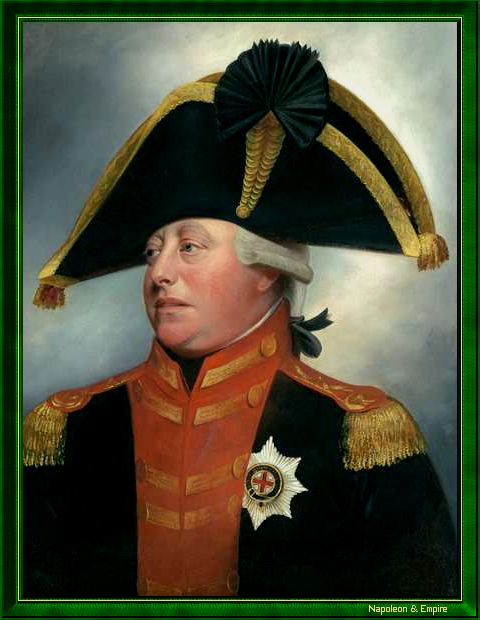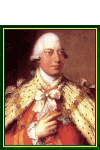King of the United Kingdom of Great-Britain and Ireland, King of Hanover
Pronunciation:

George William Frederick was born on June 4, 1738 in London, the son of Frederick, Prince of Wales (himself the son of King George II of Great Britain and Caroline, Margravine of Ansbach) and Princess Augusta of Saxe-Gotha.
He succeeded his grandfather George II as the King of the United Kingdom and King of Ireland in 1760, and later became the King of the United Kingdom of Great Britain and Ireland in 1801. He was also the Elector of Hanover from 1760 to 1814, and then the King of Hanover from 1814 to 1820.
When the question of his marriage arose, the demands of his position obliged him to renounce his favorite, Sarah Lennox. Despite being the granddaughter of Charles II, she was not considered of a sufficiently high rank to marry a King of England. Therefore, George III married the German princess Charlotte von Mecklenburg-Strelitz on September 8, 1761, in the Royal Chapel of St James's Palace; she bore him fifteen children.
The early years of George III's reign were marked by great military and diplomatic successes: the end of the Seven Years' War and the Treaty of Paris in 1763, which significantly expanded his colonial domain and made England the world's foremost power.
Unfortunately, from 1765, the king experienced the first attack of the illness that would accompany him throughout his life. Mental alienation was spoken of at the time, and some today diagnose episodes of manic-depressive psychosis, while others lean more towards porphyria (the controversy is not settled).
Despite Britain emerging victorious from the Seven Years' War, it was financially drained. In 1766, George III deemed it necessary to implement unprecedented taxes that angered the American Thirteen Colonies. This eventually led to deteriorating relations and the outbreak of the American Revolutionary War in 1775. The war concluded in 1783 with the independence of the United States of America. This failure deeply affected the king.
George III experienced two more attacks of his illness in 1788 and 1789, prompting the British Parliament to consider a regency. Improvement and then a lengthy remission delayed this decision, but the king's precarious health had profound political repercussions, opening the way for the ambitions of an oligarchy led by William Pitt the Younger.
Two more attacks occurred in 1801 and 1804. The last one, starting in 1810 and lasting until the king's death, finally led to the decision in 1811 to entrust the regency to his eldest son, the Prince of Wales and future George IV.
George III lost his sight permanently in 1812 and died in London on January 29, 1820.
"George III, King of the United Kingdom of Great-Britain and Ireland" by William Beechey (Burford, England 1753 - London 1839).

According to the Saint Helena Memorial, the king's illness was not just a personal calamity but also a catastrophe for France and Europe. According to this view, Napoleon I and George III could have come to an understanding, whereas it was impossible to do so with the governments radically hostile to the Revolution that the king's poor health left room for. This theory remains highly speculative.
George III's fifty-nine-year reign set a longevity record for a British sovereign and still holds the record for a male sovereign.
Other portraits

Enlarge
"King George III" painted in 1762 by Allan Ramsay (Edimburgh 1713 - Dover 1784).

Enlarge
"King George III" by Thomas Gainsborough (Sudbury, Suffolk 1727 - London 1788).